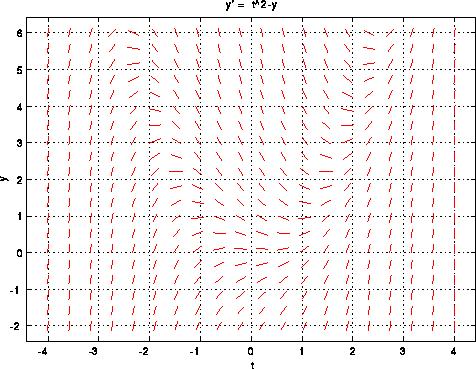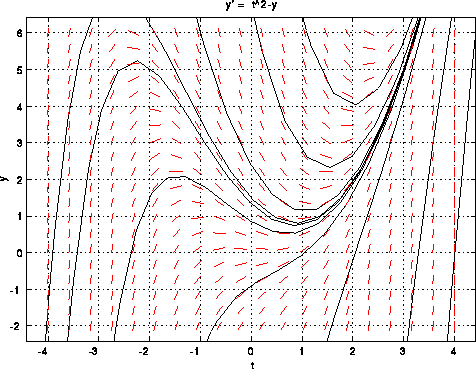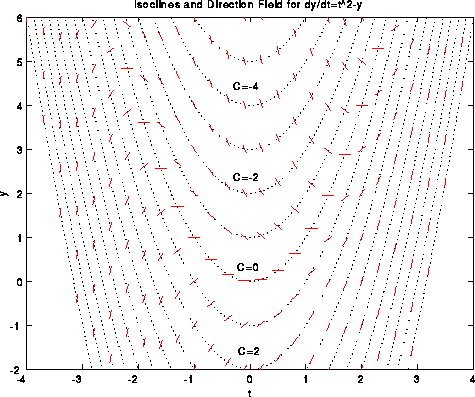
Consider the non-autonomous ode y'=t^2-y. The differential equation
gives
a formula for the slope. The slope depends on both the dependent and
independent variables.
A direction field consists of small lines which are tangent to a
solution y(t)
of the ode at each point in the t-y plane. For the differential
equation
y'=t^2-y, the function f(t,y)=t^2-y gives the slope of a solution
y(t). For t=2
and y=1 the slope is 3. This means that if y(t) passes
through (2,1), then
y'(t)=3. The following plot shows the direction
field
for the model differential
equation.

Notice that at t=2 and y=1, the small line has positive slope. It is
approximately 3, indicating that a solution passing through this point
has
slope 3.
The direction field gives a rough idea about solutions to the
differential
equation, since solutions to the differential equation are
tangent to the small
slope lines. The following plot draws in
the
solutions.

This plot gives a rough idea of behavior of solutions to the ode without
having to solve ode. Note that there are several solution curves. Why?
Each
solution corresponds to a differential initial condition. If an
initial
condition is
specified, like y(0)=1, then the curve throught t=0 and
y=1
is the solution to
the differential equation and the initial condition.
The procedure for drawing the direction field can be simplified by
first sketching
isoclines. An isocline is a curve in the t-y plane on
which the derivative of
solutions to the differential equation is constant.
For example, where is the
derivative of solutions to the model ode equal
to 3? We have y'=t^2-y=3. Henc
on the curve t^2-y=3 or y=t^2-3, the
derivative is 3. On the curve t^2-y=C, the
derivative of solutions to
the ode is C. The following plot shows isoclines for various
values of
C and the derivative of solutions to the model ode on each isocline.

Here is a summary of the procedure for doing a qualitative analysis
of
non-autonomous ode y=f(t,y)
[ODE Home] [1st-Order Home] [2nd-Order Home] [Laplace Transform Home] [Notation] [References]
Copyright © 1996 Department of Mathematics, Oregon State University
If you have questions or comments, don't hestitate to contact us.